Kangaroo Rat Tracks, Trails and Scat
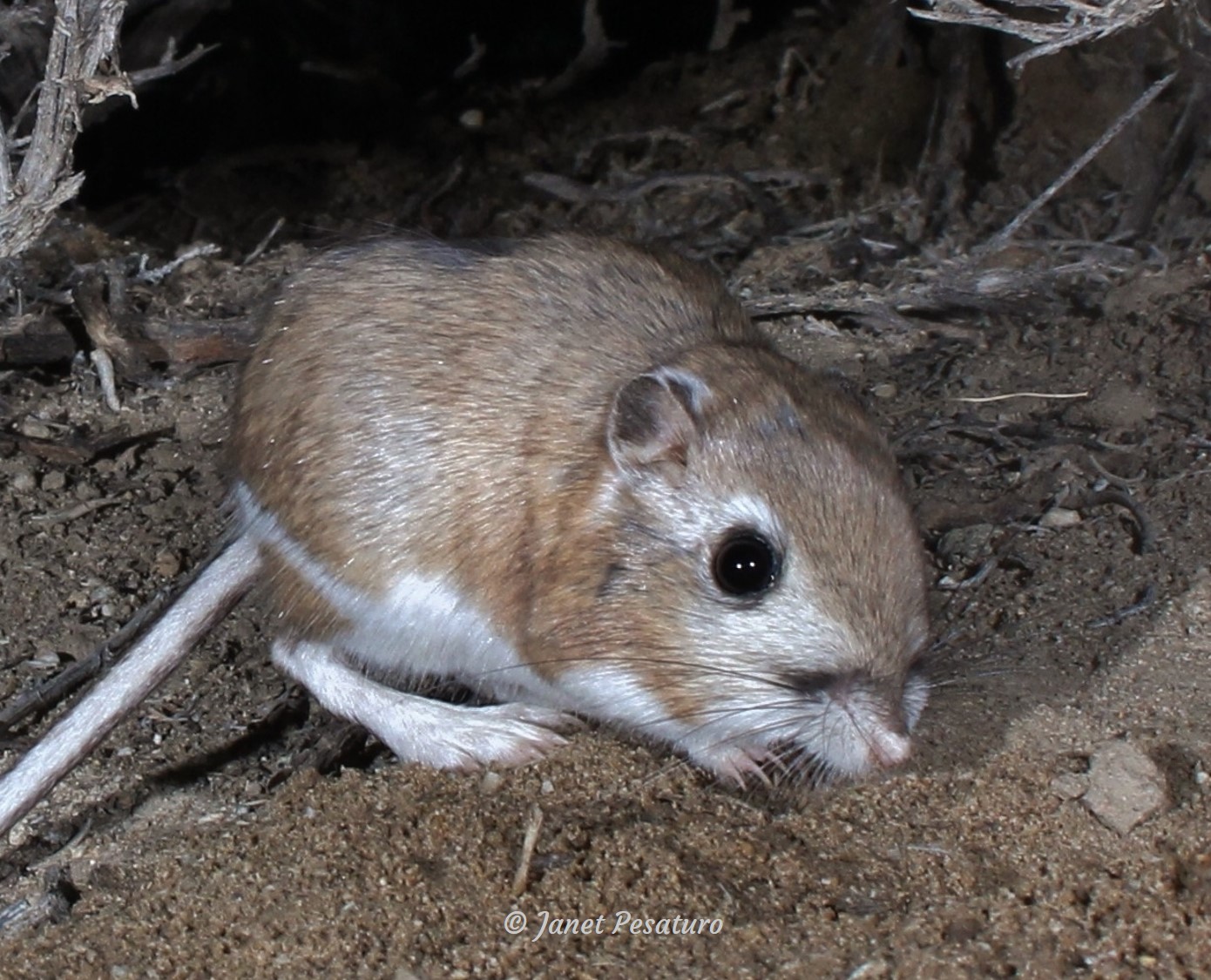
Kangaroo rats are small burrowing, seed-eating rodents of the genus Dipodomys. Of the 20 species native to western North America, 17 or 18 of them are found in the US. All inhabit arid regions: desert, dunes, dry grassland, brushland, chaparral, or pinyon-juniper forest, depending on species. Bipedal hopping on large, hind feet has earned them their common name, and creates tracks and trails that are hard to mistake for anything else. I’ve had the pleasure of tracking 4 different species and camera trapping 2 or 3 of them, during our travels in the Southwest. Because they are easy to find and interesting to study, I’ve accumulated many images of kangaroo rat tracks and sign, not to mention photos and videos of the little creatures themselves, and I’ll be presenting what I’ve learned little by little in a series of posts.
When I’m learning to track an animal, I like to watch videos of it to get a feel for how it moves and behaves, because that helps me interpret the track patterns I find in the field. So here you go. In the trail camera video below you get a pretty good look at how kangaroo rats hop, though it’s hard to tell it’s moving only on hind feet. We’ll get a closer look at that movement in a future post, but for now this at least conveys the kangaroo rat gestalt.
Kangaroo rat tracks
All species have very similar foot structure, but there is great variation in foot size because there is great variation in overall size among the different species. For example, Merriam’s kangaroo rat (D. merriami), one of the smallest, averages only 1.5 ounces, while the giant kangaroo rat (D. ingens) averages 5 ounces. Whether you’ve found kangaroo rat tracks or hope to, it’s a good idea to consult a field guide to see which species is/are in your area.
Front tracks
Kangaroo rats have tiny front feet with 5 toes, one of which is a vestigial thumb. Claws are long. Front feet are used for sifting through soil for seeds and gathering food into cheek pouches. Because these animals usually hop on hind feet only, tracks of front feet are not often seen. When present, they are usually quite indistinct and measure only 1/4 to 1/2 inches in width, depending on species.
Hind tracks
Hind feet are much larger with 4 long toes and, in some species, a vestigial thumb. Some sources make an issue of that vestigial thumb, as if it’s of great use to the tracker in determining species, but the fact is that excellent tracking conditions are needed to actually see that thumb. I can easily count on one hand the number of times I found kangaroo tracks in such wonderful conditions that foot morphology was clear and distinct: ZERO. So memorizing which species have 4 toes and which have 5 toes may impress your tracking partners, but it isn’t going to help much unless you’re able to hold the enchanting little creature in your hand and eyeball its toes.
Anyway, back to the more useful information about hind tracks. The heel often registers and when it does the track is paddle shaped, with the heel being the handle of the paddle. When the heel does not register, the handle is missing and the track appears oval or roundish. Because the bottoms of the hind feet are furry, the feet are so small, and ideal tracking conditions are rare, hind tracks rarely show crisp, defined pads. The width of the track is about 1/2 to 1 inch. The length of the track varies greatly, depending on species and whether or not the heel registers. It ranges from about 1/2 inch for a smaller species such as Ord’s kangaroo rat (D. ordii) when the heel doesn’t register, all the way up to about 2 and 1/8 inch for a larger species like the desert kangaroo rat (D. deserti) when the heel does register.
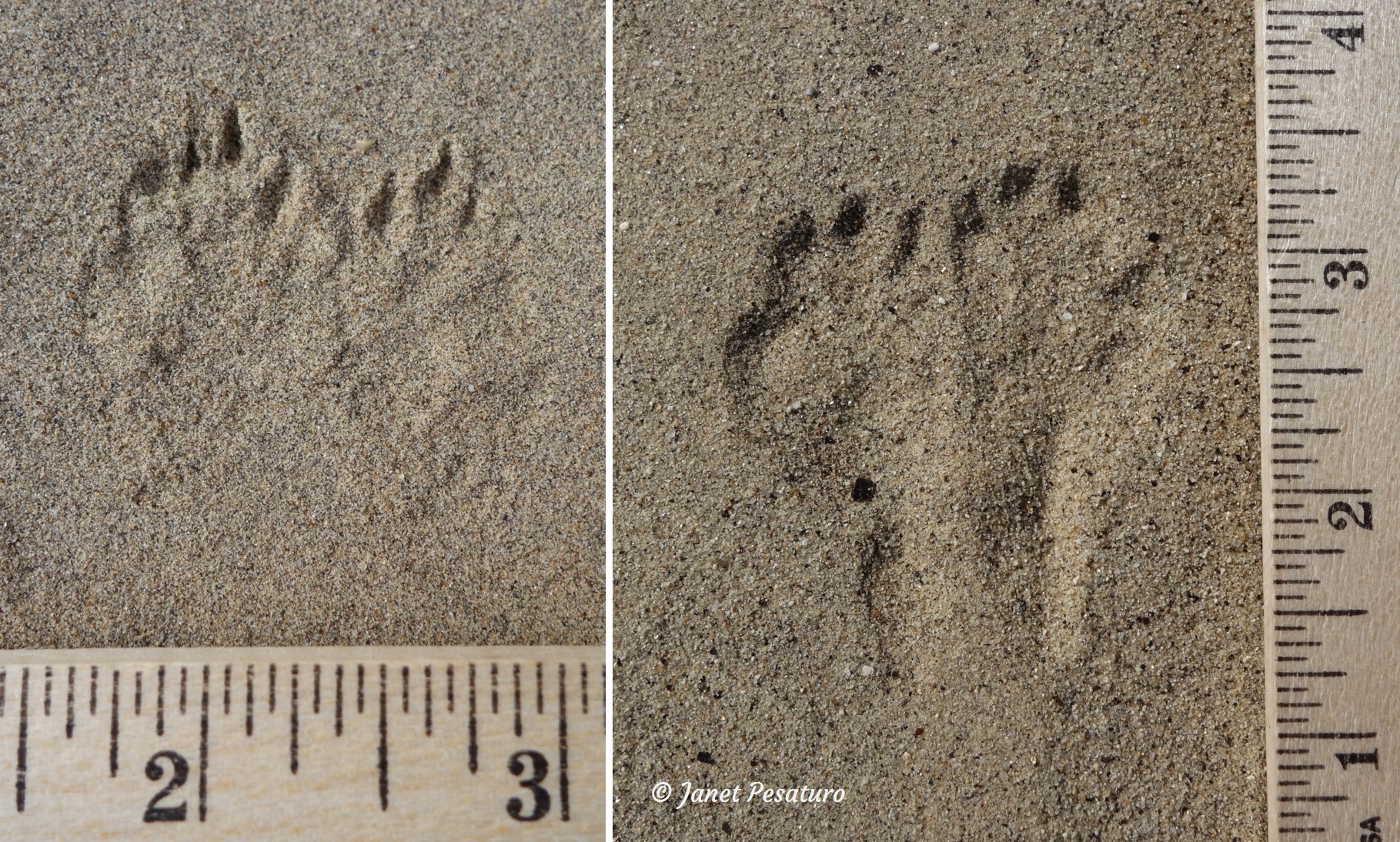
Kangaroo rat trails (or track patterns)
These little rodents usually travel in a kangaroo style hop on hind feet only (see video at the beginning of this post). Look for pairs of tracks with long toes. As you examine the track patterns, think about what the animal might be doing. When it is collecting seeds, hops may be very short and barely advance forward, move from side to side, and even slightly backward. When traveling between burrow and foraging spot, the animal advances in long strides of several inches to a foot in length. When the animal is frightened, hops may be several feet long with an erratic, zig zagging pattern, presumably to confuse predators. The very long tail probably provides stability during such rapid, erratic movement.
Tail drag marks are not usually present when a kangaroo rat is traveling quickly, but do show when it is moving slowly, such as while foraging, caching, retrieving caches, and around dust baths. Stay tuned for future posts on kangaroo rat feeding behavior and dust bathing, with photos featuring tail slaps.
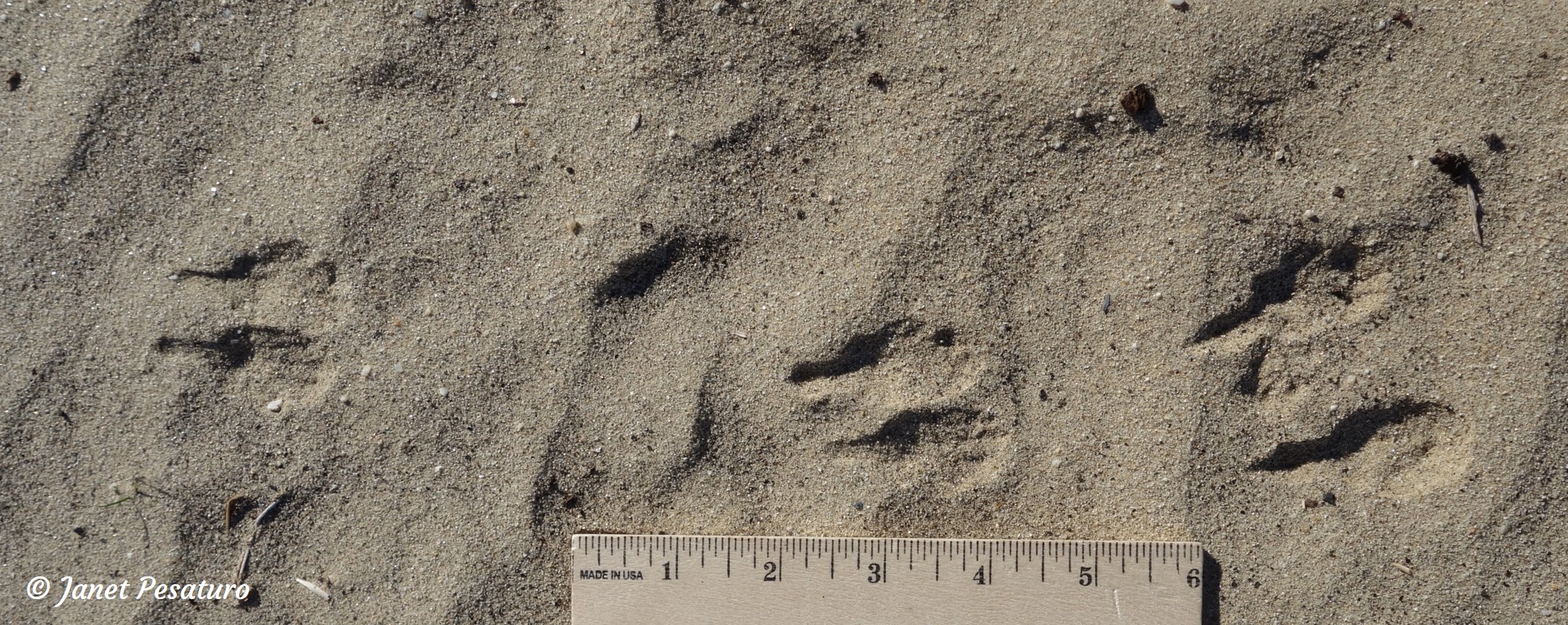

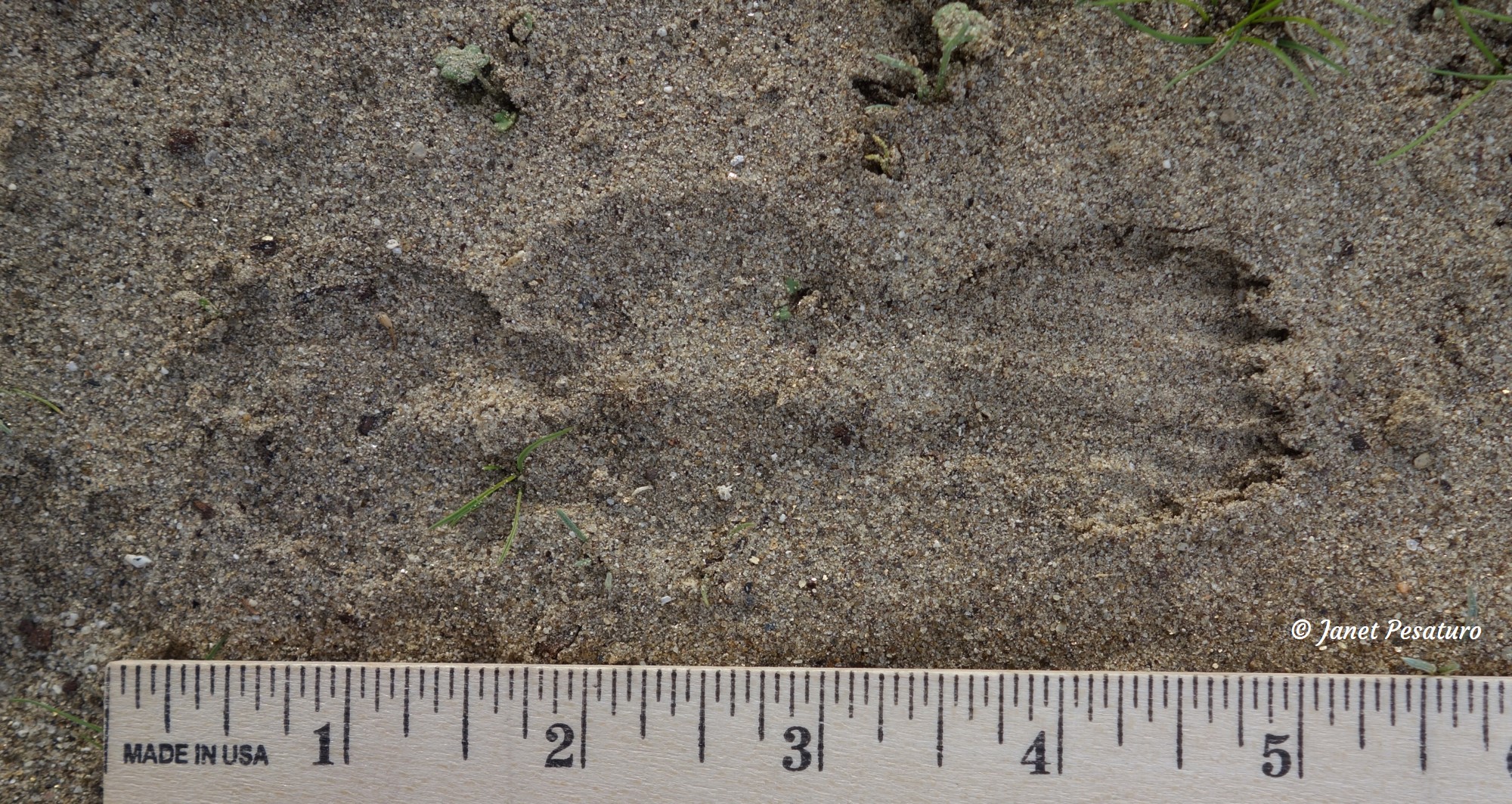
Kangaroo rat runs
Kangaroo rats do create well-worn runs between burrow entries, and between burrows and favorite foraging spots. These can be surprisingly conspicuous and measure 3 inches wide for large species, and proportionately smaller for small species.
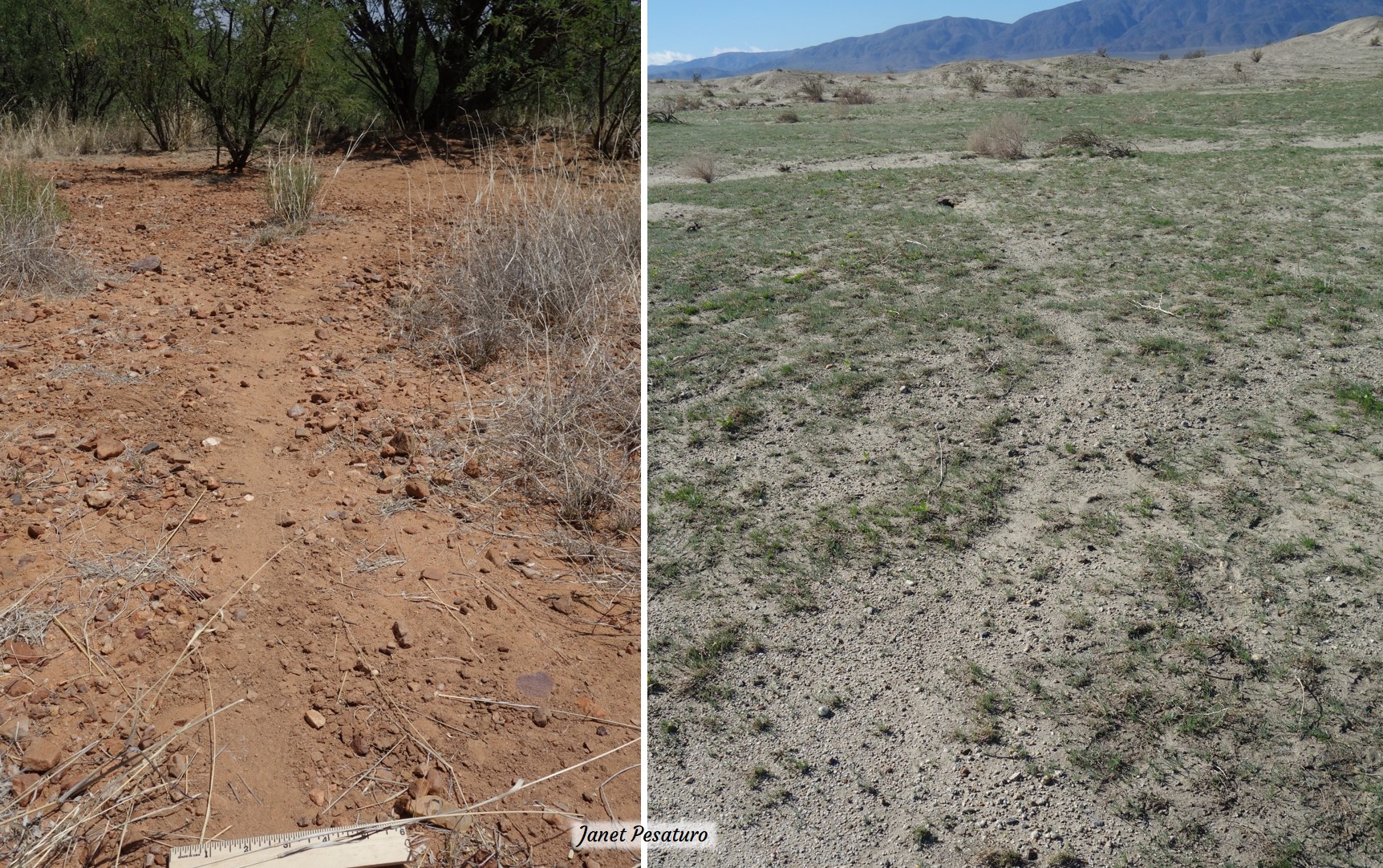
Kangaroo rat scat
These are tiny, blunt-ended, elongated pellets that may be straight or very slightly curved. Think porcupine poop in miniature. I think (not 100% certain, since I didn’t get to see them drop from the maker’s bottom) that the photo below shows a latrine of a desert kangaroo rat, one of the large species. The smaller species make smaller pellets. I am not sure if all species create latrines – most scats may be dropped at random – but the desert kangaroo rat is reputed to do so.
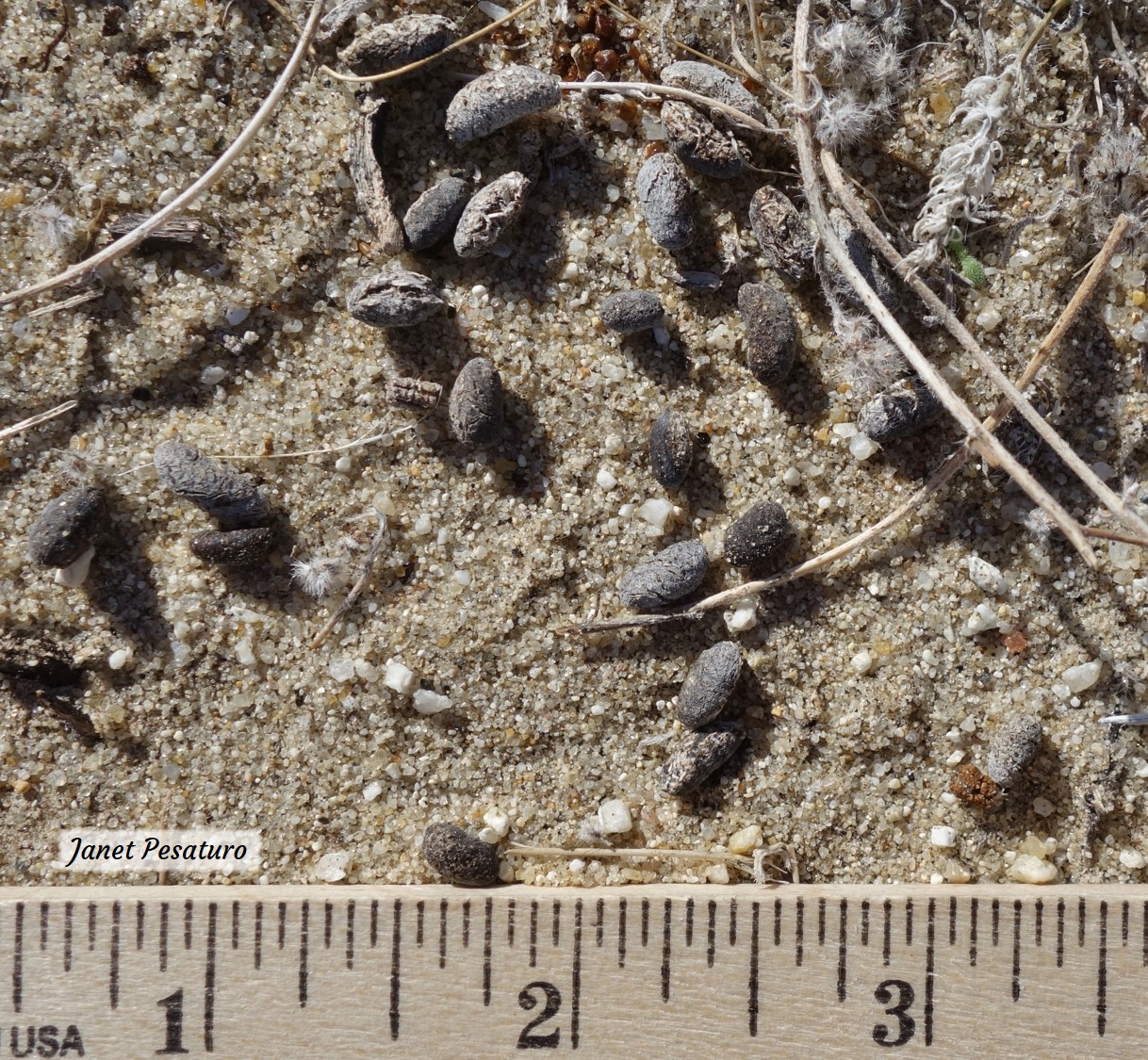
Similar species
Generally its easy to identify kangaroo rat tracks and trails but it’s worth pointing out that there are closely related kangaroo mice, also found in arid regions. They too hop bipedally on large hind feet, and look a lot like kangaroo rats, but they’re much smaller, averaging only 1/2 ounce. Also closely related are pocket mice but they bound like squirrels and don’t hop on hind feet. Kangaroo rats, kangaroo mice, and pocket mice are all in the family of heteromyids, rodents that inhabit arid regions of western North America, shelter in burrows, and subsist on seeds which they carry in fur-lined pouches. In the video at the beginning of this article, notice the tiny rodent I labeled as a pocket mouse. I think that’s what it is but it may be a young kangaroo rat.
Compare these animals to the Jumping Mouse, another seed eating rodent with large, powerful hind feet. However, it is not a heteromyid, has no cheek pouches, does not hop bipedally, and does not inhabit arid regions.

Comments
Kangaroo Rat Tracks, Trails and Scat — No Comments
HTML tags allowed in your comment: <a href="" title=""> <abbr title=""> <acronym title=""> <b> <blockquote cite=""> <cite> <code> <del datetime=""> <em> <i> <q cite=""> <s> <strike> <strong>